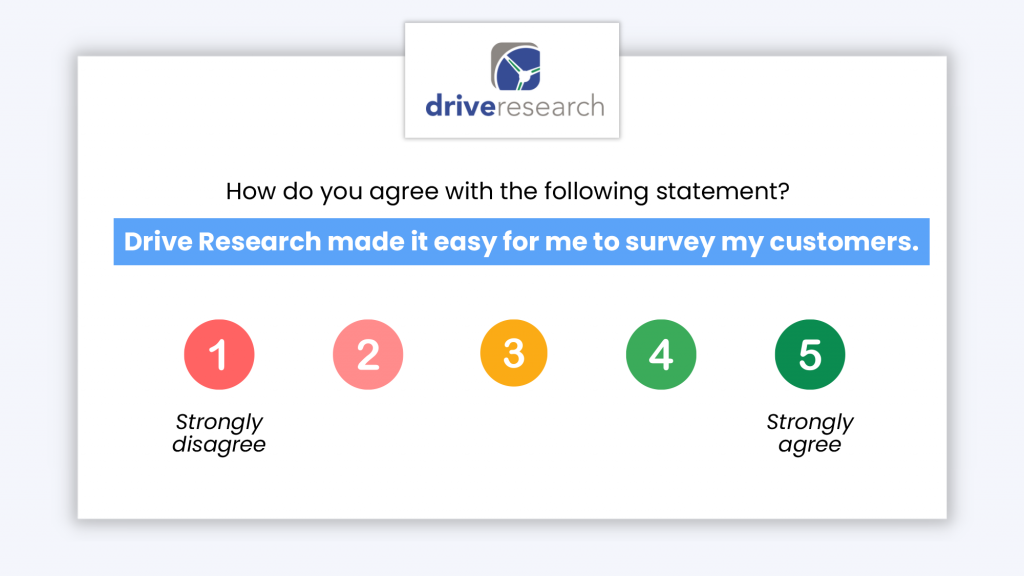
Do you truly know what your users want? In today’s rapidly evolving digital landscape, understanding your users isn’t just an advantage—it’s a necessity.
User feedback surveys are direct channels to gather insights from the very people who interact with your product or service. They are essential tools for understanding user experiences, preferences, and pain points.
Without direct user input, businesses risk building features nobody needs, overlooking critical usability issues, and ultimately, losing valuable customers.
Read on to discover which surveys to send, when to send them, and how to turn every response into measurable growth.
User Feedback Surveys Explained
Think of user feedback surveys as a friendly conversation—just in question form. Instead of guessing what people like or dislike about your product, you ask them directly, capture their answers in one tidy place, and use those insights to make smarter decisions.
These online surveys can be as quick as a single “How satisfied were you?” rating or as detailed as a multi-question deep dive into feature requests, pain points, and overall experience.
Whether you’re rolling out a brand-new app or fine-tuning an established service, user feedback surveys act like a real-time compass, pointing you toward the tweaks and innovations that matter most to the people who actually use what you’ve built.
Why User Feedback Surveys Are Important
User feedback surveys are more than just a good idea. They are a critical component of successful business strategy. They provide invaluable insights that directly impact product development, user experience, and long-term customer relationships.
Here are just a few reasons our clients have found user feedback surveys to be so beneficial.
- Uncovering Blind Spots: User feedback surveys reveal issues or opportunities that internal teams might overlook, offering a fresh, external perspective.
- Validating Assumptions: Uncover concrete data to either confirm or refute internal hypotheses about user behavior and preferences, preventing costly missteps or wasted planning.
- Guiding Product Roadmaps: User feedback directly informs which features to prioritize, what improvements to make, and where to invest development resources. For a tech company, this might mean prioritizing bug fixes or a new integration. For an ad agency, it could guide the development of new campaign reporting features for clients.
- Improving User Experience (UX): Direct feedback on usability, navigation, and overall satisfaction leads to a more intuitive and enjoyable product or service experience.
- Boosting Customer Retention & Loyalty: When customers feel heard and see their feedback implemented, it fosters a sense of value, increases satisfaction, and builds stronger long-term relationships. This is crucial for e-commerce platforms looking to build repeat customers.
- Driving Innovation: User pain points often highlight unmet needs, sparking new ideas and innovative solutions that can differentiate your product or service in the market.
Types of User Feedback Surveys
With a variety of options available, selecting the right type of survey is crucial for gathering the most relevant and actionable insights. Each type serves a distinct purpose, designed to answer specific questions about your users’ experiences.
NPS (Net Promoter Score)
This measures overall user loyalty and willingness to recommend your product or service. Net promoter score surveys are designed to capture genuine customer sentiment and identify key drivers of loyalty, and can be used to make informed decisions to enhance customer loyalty.
Learn more in our video below.
CSAT (Customer Satisfaction Score)
This metric directly gauges satisfaction with specific interactions, products, or features.
It’s typically measured by asking a question like, “How satisfied were you with [specific interaction/product/feature]?”
CSAT is valuable for understanding immediate sentiment after a key touchpoint, such as a customer support interaction, a recent purchase on an e-commerce site, or the use of a newly released software feature.
By tracking CSAT over time for different touchpoints, businesses can quickly pinpoint areas of friction or exceptional performance.
CES (Customer Effort Score)
Next, customer effort score focuses on the ease with which users can complete a specific task or interaction.
It’s typically measured by asking questions like, “How easy was it to [specific task, e.g., ‘find the information you needed,’ ‘resolve your issue,’ ‘complete your purchase’]?”
Users usually respond on a scale, such as “Very Difficult” to “Very Easy,” or “Strongly Disagree.” A high CES indicates a smooth, frictionless experience, which is crucial for reducing frustration and improving overall user satisfaction and loyalty.

Feature-Specific Surveys
These highly targeted surveys are designed to gather precise input on new or existing features directly within the application or service itself. The questions are focused on the usability, value, and overall satisfaction with that single feature, allowing businesses to collect actionable feedback for iterative improvements and future development. For example, a tech company might deploy a feature-specific survey after a user interacts with a new dashboard layout, asking about its intuitiveness and helpfulness.
Post-Purchase/Post-Interaction Surveys
These surveys are strategically deployed immediately after a user completes a specific action or interaction, such as a transaction on an e-commerce site or a customer service call. We find that they are the best at capturing fresh, accurate feedback on that experience.
And as a result, they provide important insights into the customer’s satisfaction and any friction points encountered during that crucial moment.
General Sentiment Surveys
Lastly, general sentiment surveys are designed to capture a broader understanding of user perception and overall satisfaction with a brand or organization, product, or service as a whole.
They are great for collecting insights into general attitudes, perceptions, and overarching expectations and are excellent for periodic health checks of customer sentiment and to identify emerging trends or widespread areas for improvement across your entire offering.
How to Conduct Effective User Feedback Surveys
Now that you understand the “why” and “what” of user feedback surveys, the next step is to craft surveys that yield the most valuable insights.
Our market research company finds that thoughtful design and strategic deployment are key to maximizing your response rates and the quality of data collected.
Here are our favorite best practices:
- Define Your Objectives: Clearly articulate what specific questions you need answered before you even start writing questions.
- Keep it Concise and Focused: Respect your users’ time. Shorter surveys generally have higher completion rates.
- Use Clear, Unambiguous Language: It’s generally best to avoid jargon, technical terms, or leading questions that could bias responses.
- Mix Question Types:
- Quantitative questions (e.g., rating scales, multiple choice) provide measurable data for trends and comparisons.
- Qualitative questions (e.g., open-ended text boxes) provide rich, detailed insights into the “why” behind the “what.”
- Strategic Placement and Timing: Present the survey when it’s most relevant to the user’s experience (e.g., after a specific interaction, or at predetermined touchpoints in their journey).
- Incentivize (This is optional but effective. In fact, incentives have been shown to increase survey participation rates by up to 19%): Offering a small incentive (e.g., discount, entry into a drawing) can significantly boost participation.
Analyzing and Acting on User Feedback
After collecting the valuable data, the real value comes from transforming that raw data into actionable insights and eventual strategies. This stage involves systematic analysis and integration of user insights into improvements.
- Data Collection & Organization: Utilize survey platforms and analytics tools to efficiently collect, store, and organize responses.
- Identifying Trends and Patterns: Look for recurring themes, common pain points, and significant data points that emerge from both quantitative and qualitative data.
- Segmenting Your Data: Analyze feedback from different user groups (e.g., new users vs. power users, different demographics) to uncover nuanced insights.
- Prioritization: Not all feedback can be acted upon immediately. Prioritize based on impact (how many users are affected) and effort (feasibility of implementation).
- Closing the Loop: Communicate changes and improvements to users based on their feedback. Showing users that their voices are heard and valued reinforces trust and loyalty.
Final Thoughts
User feedback surveys are not a one-time task but an ongoing, essential component of a successful product or service development strategy. They are fundamental to understanding your users’ evolving needs. Start incorporating regular user feedback surveys into your strategy, or refine your existing approach.
By continuously listening to and acting on your users’ insights, you build products and services that truly resonate, fostering loyalty and sustainable growth in an ever-competitive landscape.
Contact Us to Conduct User Feedback Surveys
Ready to replace guesswork with hard data? Drive Research handles every step of user feedback surveys—from crafting questions and deploying them at the perfect moment to turning raw responses into clear, confidence-boosting insights.
Our senior researchers make the process smooth and stress-free, delivering actionable findings you can put to work right away.
Reach out today and let’s build experiences your users will rave about.



